Earlier this month, Gartner reported worldwide tablet sales for 2013 that depicted Apple's iPad as slipping into obscurity with just 36 percent market share left. Why would Microsoft target Apple's minority tablet platform with its new mobile Office apps over Google's Android, which supposedly owns a 61.9 percent marketshare?
Gartner's tablet numbers
Gartner takes its data very seriously, describing its research as "the most comprehensive collection of analysis and advice for the users and vendors of technology."
While the firm also notes that "Gartner insights are drawn from a critical fact base not available anywhere else," the conclusions it generates about the direction of the global tablet industry largely line up with the opinions of other market research firms including IDC and Strategy Analytics, even if the actual tablet market numbers presented by each company may differ by as much as 9.8 million units within a single quarter.
The only sales numbers that market research firms seem to consistently agree upon are iPad shipments, because Apple is the only company that reports how many tablets it actually sold.
At the same time, all of the market research firms seem to be in agreement, at least in their publicly released reports, that Apple's share of the market is rapidly dropping, a trend they began predicting would occur as soon as iPad competitors began to materialize. So how does it make any sense that Microsoft is focusing attention on an ostensibly withering platform, when there is the booming Android tablet business to profit from?
If Android took 61.9% of tablets & iPad only 36%, why did $MSFT bring Office to $AAPL iPad first? @Gartner_inc $GOOG http://t.co/umhItboMSS
— Daniel Eran Dilger (@DanielEran) March 27, 2014Microsoft privy to non-public market share data
Microsoft was no doubt aware of public reports throughout 2013 that predicted Apple's share of tablet sales would continue to shrivel up into obscurity. Why would it target the release of Office for iPad in early 2014, a full year after this data was generated? In part, it appears that, as a client of these market research firms, Microsoft has access to more of their data than those firms make publicly available.
Market researchers are not always coy in supplying context for the numbers they tabulate. In a conversation with AppleInsider last fall, IDC analyst Ryan Reith noted that his company engaged in research during 2013 that turned up a "significant surge in low end devices," which he described as "tier two" class tablets, ones that feature processors as slow as 600 MHz and include devices that Reith offhandedly described as "kids tablets or toys."
These sort of "tablets" make up an incredible two thirds of the global tablet numbers reported by market research firms, clarifying that it's the recent recognition of these devices as "tablets" that has affected Apple's iPad "market share," not competition from tablet makers like Samsung and Microsoft, both of whom continue to struggle far behind Apple in their tablet sales.
In addition to not being fooled by public market research firms' data insisting that iPad sales are tumbling off a cliff, Microsoft is also well aware of its own anemic Surface sales and the competitive pressure being exerted by Apple's iPad sales against its partner's Tablet PCs and PCs in general. Microsoft knows what hardware its current and potential customers are using.
Microsoft reverses gears on its anti-iPad campaign
Microsoft's new chief executive Satya Nadella, speaking at this week's event where the company unveiled its new Office apps for iPad, stressed that his company isn't worried about optics of supporting Apple's competing iOS platform, and is instead seeking to make its software products and cloud services available on the mobile devices that its customers are actually using.
This appears to be a dramatic shift for Microsoft. In the late 1980s, Bill Gates was famously said to have told Steve Jobs that Microsoft would never develop its software for the NeXT Computer (the precursor of today's Mac OS X) phrasing his position as, "Develop for it? I'll piss on it."
A decade later, Jobs had to threaten Gates with a multibillion dollar patent infringement case in order to get Microsoft to agree to update its port Office to the Macintosh, a deal that resulted in an incredibly terrible version of Office for Macintosh figuratively dripping in contempt for Apple, Jobs and Macintosh customers.
More recently, Microsoft's last chief executive Steve Ballmer was rumored to have postponed the deployment of native iPad Office apps that were ostensibly ready to release back in 2012, in order to avoid stealing the thunder of the Surface RT and Pro tablets that Microsoft had been fruitlessly seeking to sell in late 2012 and through 2013.
In fact, a primary element of Microsoft's $1 billion 2012 ad campaign for Windows 8 and Surface involved denigrating Apple's iPad as being a "toy" and unfit for business tasks.
Only a monumental failure of the Surface and the greater ecosystem of Tablet PCs could force Microsoft to humbly eat up $1 billion worth of its advertising words and return to the market with Office apps designed to make Apple's iPad a key element of its non-toy, ready for business initiative intended to keep Office relevant in the Post PC world.
That has happened. Most of the billboards erected to portray the Surface as uniquely able to run the "real" Office are now gone, including the notorious ads that depicted a Surface failing to correctly add up five numbers in the "real" (albeit non-touch oriented) Excel.
Microsoft has also stopped mocking Apple's Siri for not being able to launch Powerpoint on iPad, because it now can.
Even the company's October ads for touch-based PCs running Window 8.1, carrying the tagline "honestly, it works for work," are fading away.
Frank Shaw's imitation of imitation apps
Just five months ago, that ad campaign was kicked off by Microsoft's Corporate Vice President of Communications Frank Shaw, who took to a blog posting to ridicule the iPad as being an "entertainment device" while denigrating Apple's Pages, Numbers and Keynote mobile apps as "struggling, lightweight productivity apps" that he dismissed as "watered down" and "imitation apps."
This week, Shaw helped kick off the event that introduced Microsoft's Office apps for iPad. But notably, rather than outlining a series of breakout features that clearly differentiated the new Office apps from Apple's iWork, the company largely repeated Phil Schiller's demonstration of the original iWork apps released alongside the first iPad in 2010, an astounding four years earlier.
Rather than focusing attention on, say, OneDrive as a competitor to iCloud or detailing some advantages of Microsoft's Ribbon-style interface over Apple's user interface for iWork apps, Microsoft's Julia White principally highlighted Word's ability to dynamically wrap text around graphics as the user moved the object via touch (just like Pages); Excel's presentation of a custom numeric keyboard when editing spreadsheet data (just like Numbers) and Powerpoint's animated transitions and direct manipulation of slide order (just like Keynote).
If you watch Steve Jobs' entire 2010 iPad keynote, Schiller outlined a lot of other features of iWork, the first touch-centric productivity suite, back in 2010; more than Microsoft demonstrated in 2014, four years and over 200 million iPads later.
White bizarrely didn't highlight much else in the new Office apps for iPad, even though there are some noteworthy and significant original features in the three new apps.
If that weren't embarrassing enough for the "real Office" that Microsoft has had simmering for iPad for over a year now, there's also Microsoft's omission of support for AirPrint, or any ability to print from Office on iPad at all, outside of mailing yourself the documents and printing them directly from Pages, Numbers or Keynote.
Microsoft says it will quickly work to address users' needs in rapid updates of the new Office suite for iPad, another line borrowed from Apple, which has finally gotten serious about releasing frequent, serious updates to iWork. But Microsoft will be selling its product in competition with Apple's iWork, which is now free, on Apple's App Store (which is not free for Microsoft).
Why not tackle the lower hanging fruit in Android land?
After more than a year of bashing Apple's iPad, it might seem more sensible for Microsoft to first offer to support a different competing platform with its touch-centric Office apps: Google's Android, a platform with a noteworthy lack of sophisticated, touch oriented, tablet optimized productivity software. Android is practically begging for Office.
Given the market share numbers from Gartner, IDC and Strategy Analytics, this would also seem to be more sensible commercially, were we still pretending that those market share numbers weren't completely preposterous nonsense that is completely irrelevant to the enterprise, government and education markets where Apple's iPad completely dominates with overwhelming market share.
As it stands, while Microsoft and Google remain bitter rivals engaged in lawsuits at least as ugly as those between Apple and Samsung, Microsoft continues to earn most of its licensing revenue from patent royalties paid by Android licensees, if for no other reason that the company's own Windows Phone and Tablet PC aren't generating any real licensing revenue at all.
There are some significant problems with Android tablets however. First of all, there's IDC data showing that the vast majority of Android tablets are "tier two" devices that minimally function as "kid's toys" or video players. That's not where the money is.
There's also Android's software fragmentation, which makes it much harder to develop apps of any kind when compared to Apple's iOS platform, where the majority of devices sold over the past three years all run the same, up to date version of the operating system, presenting the same development API version capable of supporting the latest features.
Android development tools are inferior
Development tools under Android are also weaker and harder to use. A recent article by Jon Evans of TechCrunch described Apple's Xcode as "a joy to work with," featuring a "debugger [that] works seamlessly, and the simulator is fast and responsive." In contrast, Evans wrote that Android's Eclipse IDE "is embarrassingly bad. Slow, clunky, counterintuitive when not outright baffling, poorly laid out, needlessly complex, it's just a mess."
Evans called Apple's Interface Builder "a very sleek way to put simple good-looking user interfaces together quickly," while noting only that "while Android theoretically has a comparable visual tool, the less said about it the better."
"Android has its advantages," Evans concluded, "but overall, it remains significantly easier to write good iOS apps than good Android apps."
Android's business model problems for developers
Those issues all help to explain why Android has so few tablet optimized apps of any kind. But even the apps that are available are not seeing sales comparable to Apple's App Store. Additionally, the primary business model for supporting Android apps is advertising, in large measure because that's Google's primary business model behind Android itself.
Imagine an ad supported version of Office running on Android.
Additionally, Android tablet makers are focused on selling low priced devices that customers can be enticed to buy. Samsung established that was necessary in its initial attempt to sell iPad clones at similar price points, an effort that was not successful at all.
Google's other partners' attempts to sell Android Honeycomb 3.0 tablets priced at or higher than iPads also failed disastrously, helping to focusing Google's Nexus co-branded tablets and other Android-based initiatives at the very low end of the market.
That's the same strategy that the Commodore 64 used to claim greater market share than the Apple II back in the early days of computing, but it did not result in a viable market for selling C64 software. On the other hand, Apple was able to make lots of money selling AppleWorks to its own customers in the early 1980s, creating a market that attracted Microsoft's attention.
Apple's relatively pricey Macintosh continued to retain disproportionally high interest from third party developers, including Microsoft, for many years after Apple's PC market share dropped down into the single digits in the early 1990s.
Apple's premium hardware model is selling software
It wasn't just unit market share that sold software titles then or now. It's always been premium customers who were willing to pay more for hardware who were also the most valuable software customers. Even five years ago, if you'd said Apple was going to stuff Microsoft Windows back into Pandora's Box and return the tech world to a time where there was real competition in hardware and third party developers like Microsoft had to compete in a software meritocracy for sales, you'd be laughed at.
What we are witnessing today is a radical shift in the computing landscape that nobody predicted, nor could even fathom occurring if you traveled back in time and told them.
Even five years ago, if you'd said Apple was going to stuff Microsoft Windows back into Pandora's Box and return the tech world to a time where there was real competition in hardware and third party developers like Microsoft had to compete in a software meritocracy for sales, you'd be laughed at.
The idea that a software monoculture platform like Windows or Android is the only way to have competition is actually backwards; Microsoft proved beyond any doubt over the past twenty years that with a broadly licensed platform, it could keep software prices sky high and effectively kill any and all competition before it could even sprout.
Microsoft Office remained a $500 suite right up until Apple released iWork and a variety of web-oriented productivity suites like Google Docs appeared. That took nearly a decade. With competition restored, it will be very hard for Microsoft to jack the price of software back up into the stratosphere.
Apple's premium hardware model is promoting real competition
Today, even many Apple fans secretly fear that Apple's increasingly powerful market position needs competition to prevent abuse. But Apple has never been without competition. And only since the rise of OS X and iOS has effective competition been restored. Prices of everyday computing hardware have plummeted even as new mobile form factors and new types of software and services have sprung up.
Apple currently commands a premium in smartphone sales and its tablets are priced higher than competitors, but only because nobody else can sell their own high end products at any price. However, Apple's business model of selling premium hardware means that competitors can germinate under that price umbrella and exert competitive pressure.
Under the Microsoft (or Android) model, hardware prices are driven down so cheap that everyone loses, especially those who are willing to pay more for better gear. The result is a commodity market where all you can buy is junk, and any efforts to compete with better products are undermined by price dumping that effectively destroys innovation.
On the software side, Apple's App Store is a dynamic market of highly competitive software offerings, something that has never previously existed. The very notion of a $500 Microsoft Office or Adobe Creative Suite doesn't even compute for the majority of the population anymore. Today, quality mainstream apps are commonly less than $10. Most of Apple's leading apps are now free. Really, the market has spoken, and there appears to be no turning back
Market research companies are largely still stuck in the mindset of the 1990s, where cheap, low end PC hardware running $500 software suites (that are widely pirated) makes more sense in their minds than high quality hardware with an affordable, broad selection of quality apps that compete for attention.
Apple's unique, premium hardware business model has transformed media players, smartphones, dedicated video games, tablets and desktop computers. There are as many reasons to think that it will also transform other markets, from TV to home automation to wearables.
Really, the market has spoken, and there appears to be no turning back. Microsoft will now need to compete for its revenues, just as Apple will continue to compete for customers' hardware affections. Android, Linux, Windows and Tizen can compete for their share of the cheap hardware market, but none of them look likely to ever lock the world back into a monopoly monoculture, at least under current conditions.
We could fail to learn from the past
The only way a Windows-style monopoly monoculture might return to the tech industry is if the American government repeats the same mistake that initiated the original Windows Dark Ages: decreeing by arbitrary fiat that the intellectual property of one company should be seized and transferred to another one, just as the courts ruled in 1992 that Microsoft should be transferred billions of dollars worth of Apple's property, forcing Apple to compete against its own technology.
While today's courts have flirted with the idea of effectively transferring Apple's intellectual property to South Korea via Samsung or to China via Lenovo's acquisition of Motorola via simple inaction, they haven't gone that far yet. And more importantly, Apple has remained a competitive juggernaut in the market despite the failure of American courts to decisively rule in favor of the enforcement of existing intellectual property laws.
Consumers are currently winning because there are more options, and in turn more intense competition. And that's why Microsoft ported Office to iPad before Android: it was forced to do so in order to remain relevant. Android doesn't have the power or relevance to make anything happen.
 Daniel Eran Dilger
Daniel Eran Dilger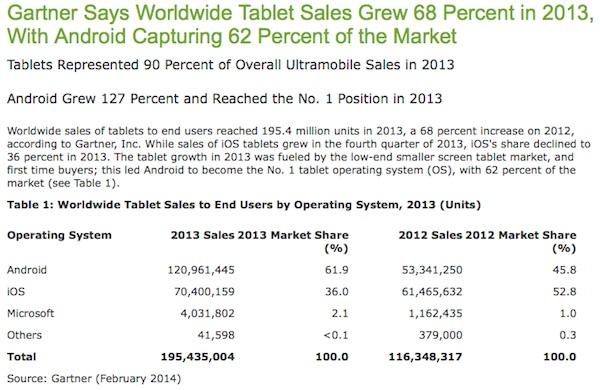
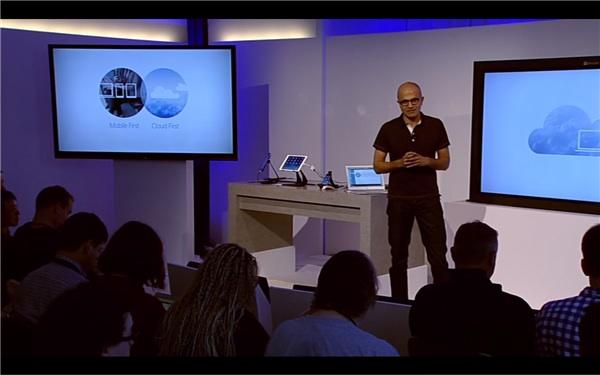
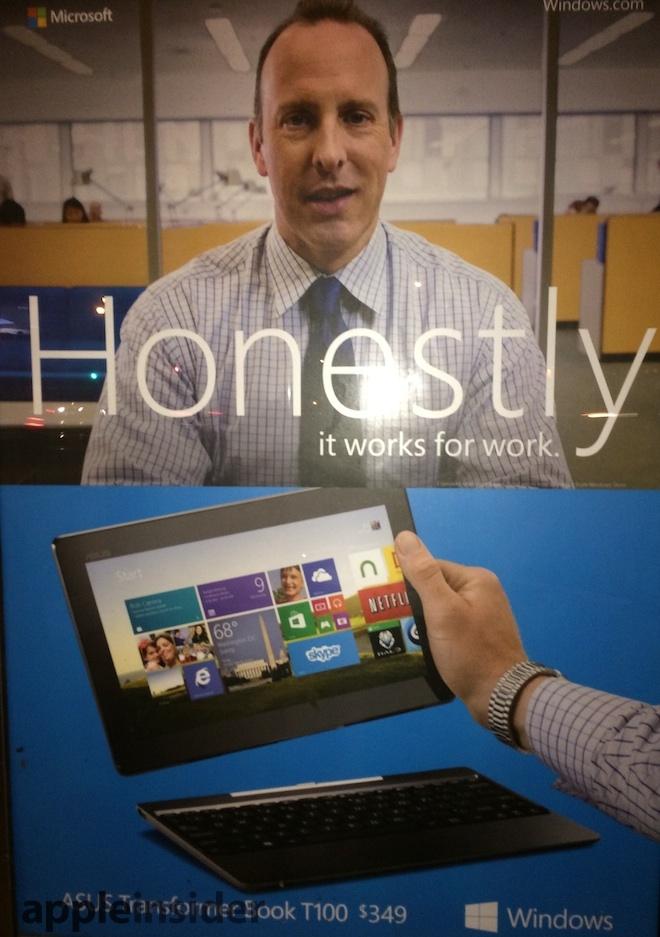
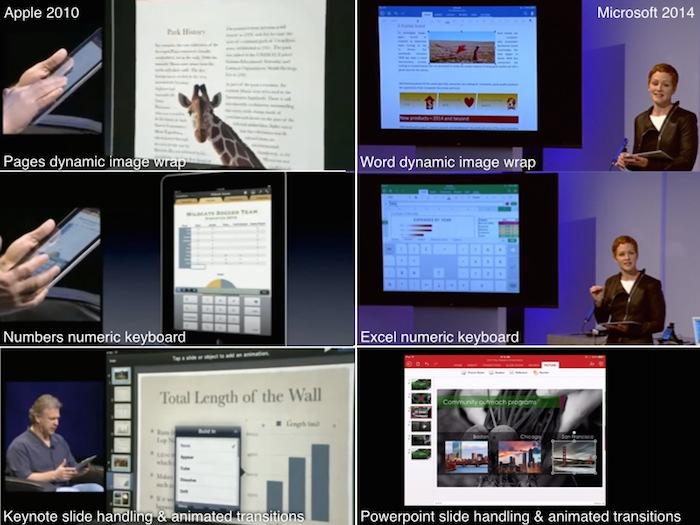
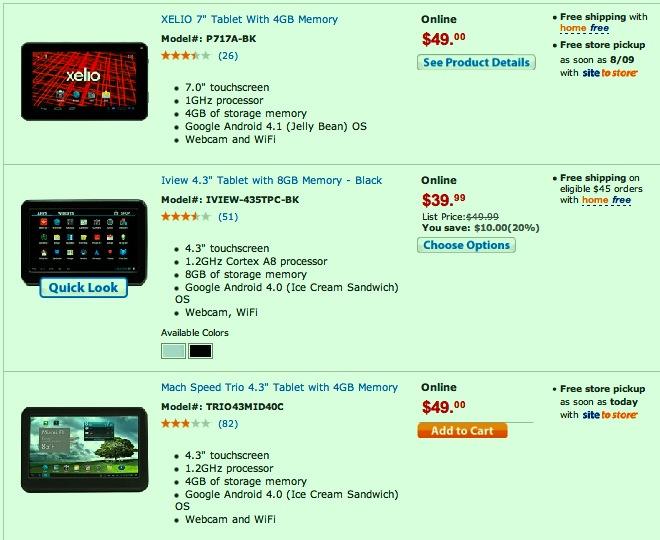
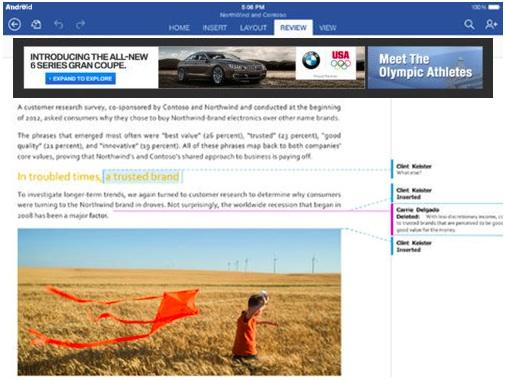
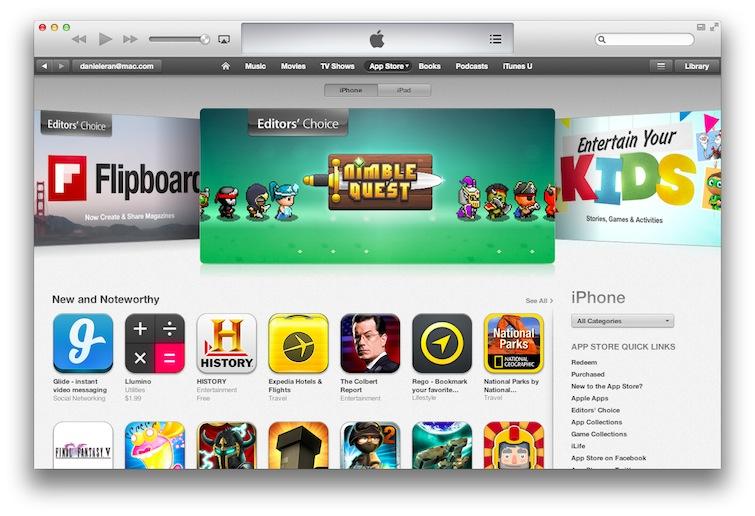



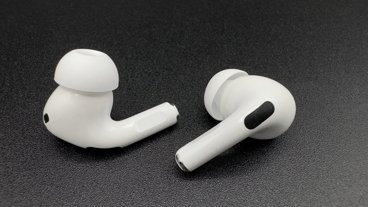



-m.jpg)






 William Gallagher
William Gallagher
 Andrew O'Hara
Andrew O'Hara
 Malcolm Owen
Malcolm Owen
 Sponsored Content
Sponsored Content
 Charles Martin
Charles Martin


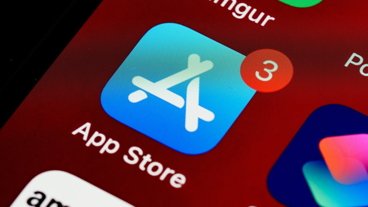








236 Comments
Why did Microsoft port Office to Apple's iOS iPad before Android? The author himself noted the most likely reason: "More recently, Microsoft's last chief executive Steve Ballmer was rumored to have postponed the deployment of native iPad Office apps that were ostensibly [B]ready to release back in 2012,[/B]"
We don't need an overly-long article to answer that question. The answer is the iPad is 50X the stronger platform when it comes to tablets.
It's not a weekend without DED.
Porting to Android means deciding which Android to port to. Most Android stk's won't scale from device to device the way iOS does. Back up and look at the whole picture. Watched an interview with a pair of developers who have over $200M/yr from their app - just from iOS. Interviewer asked when Android and why not yet. They said there are 800 individual flavors - and even picking the top ten, that meant developing for ten specific platforms with lots of similarities - and differences. What's the return on time invested? Just part of the farce of open source. Trying to run in the world of commerce while thinking like a hobbyist is absurd. The first question I ask folks who choose on the basis of open source is "what have you reprogrammed or built to use as your own apps?" For consumers, which is 99.999% of all of us, a solid stk-produced product with ample security is what we need. Not laissez-faire ideology.
Why? Because android still cannot authenticate properly to Microsoft web services. Either on premise or in MS cloud. This is a big issue with corporate users. If active directory integration is a must and single signon is required for your MS OS devices and failover to SSL on non-ms OS is a must android still cannot do that natively. Google seems to have no desire to fix this. This is why we do not support android in our IT environment.